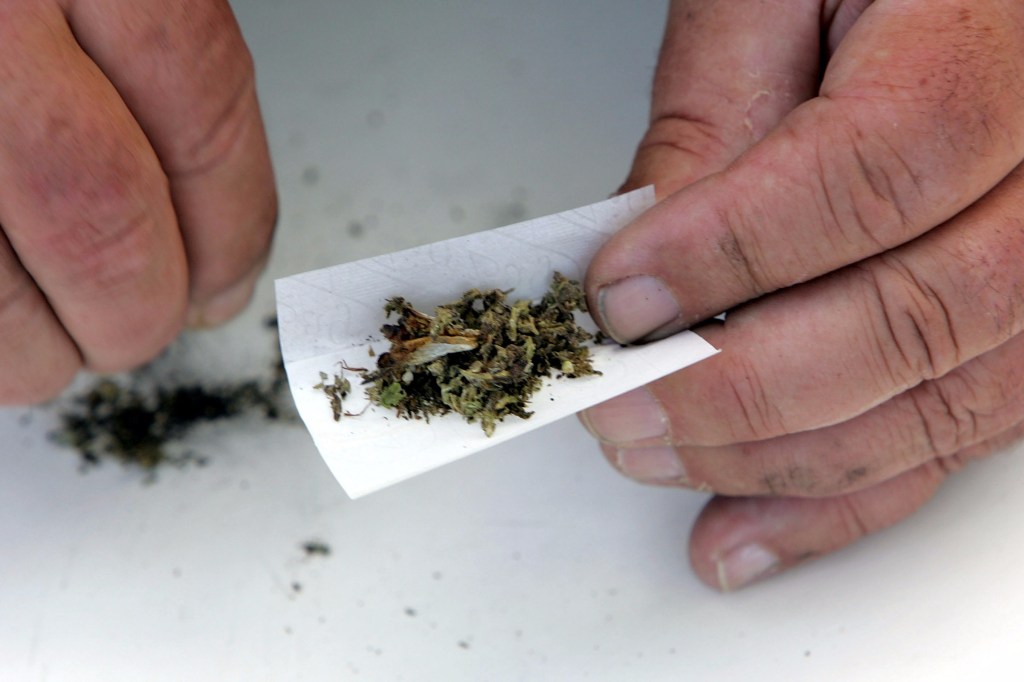Marijuana smoke can damage the human body like tobacco does, and a current proposal to legalize it could create a public health threat that has not been adequately measured, according to an analysis released today by researchers at UC San Francisco.
The report also warns that the proposal under consideration might lead to the industrialization of the marijuana industry, which could further popularize the smoking of marijuana and increase the danger to public health.
The analysis was unveiled a day after the California Medical Association publicly supported the proposal – a potential November ballot initiative to legalize marijuana for adult use, without need for a medical prescription.
Rachel Barry, a researcher at UCSF’s Center for Tobacco Control Research and Education, the lead author of the analysis, said people get the wrong idea when they hear the words “medicinal marijuana.”
“People think it’s not harmful and actually beneficial,” Barry said. “There’s research to show it’s not harmless, that it has similar cardiovascular effects to cigarettes.”
Nevertheless, the UCSF analysis accepts the premise that marijuana should ultimately be legalized given “the social inequities and large public costs of the failed War on Drugs.”
It’s just that the proposed ballot initiative — like another legalization proposal also addressed, and criticized, in the report — is “written primarily to create a new business,” the analysis says, with only “minimal protections for the public that are unlikely to prevent public health harms caused by the burgeoning marijuana industry.”
The physician community discourages smoking marijuana, but it supports the pending legalization proposal, in part because it provides for monitoring, education, regulation and research, said Molly Weedn, spokeswoman for the medical association.
“We want to make sure there’s a system in place, and right now it’s willy-nilly,” she said.
The medical association believes such a system would allow researchers and government officials to better measure the health risks associated with marijuana.
The proposed ballot initiative, if enacted, could help people assess the risks associated with smoking marijuana, Weedn said.
Barry countered that in the absence of better data on marijuana, it makes no sense to tacitly approve its use.
“I think a precautionary public health approach is better than a wait-and-see-what-happens approach,” Barry said. “Lack of evidence doesn’t mean it’s not harmful, and more research needs to be done before opening the floodgates to marijuana.”
The report, based on a number of scientific studies, concludes that the toxicity of marijuana smoke is “similar” to tobacco smoke, and says, “this similarity makes it likely that marijuana use will have comparable health effects as tobacco,” including harm caused by secondhand smoke.
Mason Tvert, director of communications for the Denver-based Marijuana Policy Project, a sponsor of the proposed ballot initiative, contested the findings in the UCSF report.
“There is an abundance of evidence that demonstrates smoking marijuana is not even remotely as problematic as smoking tobacco,” Tvert said in an email. “Every year, hundreds of thousands of U.S. deaths are attributed to the smoking of tobacco, whereas zero deaths have ever been attributed solely to the smoking of marijuana.”
Equating the health effects of marijuana with tobacco, he said, “is like claiming grilled salmon is as unhealthy as fried chicken.”
Proponents of the measure have not yet gathered enough signatures to qualify it for the November ballot. They have until July 15 to do so.
Luke Bruner, owner of the Wonderland Nursery in Garberville, part of the Northern California marijuana-growing region known as the Emerald Triangle, shared the concern of the UCSF researchers about the possible corporatization of the marijuana trade — but for different reasons.
His business cultivates young marijuana plant cuttings to sell to growers.
“One thing that does concern me about big corporations,” Bruner said, “is that the quality goes down and the regulations go up.”


